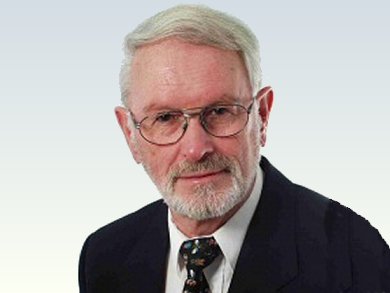Werner Weisweiler celebrates his 75th birthday on February 18th. Weisweiler is a well-known chemist in the area of heterogeneous catalysis for environmental technology. His research focused on the reduction of nitrogen oxides and other pollutants from diesel engine exhausts, while simultaneously reducing fuel consumption, as well as the removal of volatile organic compounds (VOCs) through selective absorption.
Werner Weisweiler studied chemical engineering at the Technische Hochschule (TH) Karlsruhe, Germany, graduating in 1962. He spent a year at Balcke-Dürr GmbH, Bochum, Germany, before joining the Institute for Meteorology and Atmospheric Physics at the University of Karlsruhe, Germany. From 1968–1973, he worked as a postdoctoral fellow and lecturer at the Institute of Chemical Engineering at TH Karlsruhe and gained his Habilitation from the same university in 1973. Weisweiler became a full professor at the TH Karlsruhe in 1980, where he remained until his retirement in 2003.
He is the author of over 380 publications, 45 patents, and has won numerous awards. Weisweiler also served on the Editorial Boards of Chemical Engineering & Technology and Chemie Ingenieur Technik (CIT) from 1992–2003, including a period as Chairman of the Board, and May issue of CIT will feature a number of articles dedicated to him on the occasion of his birthday.
- Effect of Vanadia and Tungsten Loadings on the physical and chemical Characteristics of V2O5-WO3/TiO2 Catalysts,
S. Djerad, L. Tifouti, M. Crocoll, W. Weisweiler,
J. Molecul. Catal. A: Chemical 2004, 208, 257–265.
DOI: 10.1016/j.molcata.2003.07.016 - Simultaneous Catalytic Removal of Nitrogen Oxides and Soot from Diesel Exhaust Gas over Potassium Modified Iron Oxide,
S. Kureti, K. Hizbullah, W. Weisweiler,
Chem. Eng. Technol. 2003, 26(9), 1003–1006.
DOI: 10.1002/ceat.200301759 - Modeling of Kinetic Expressions for the Reduction of NOx by Hydrogen in Oxygen-Rich Exhausts Using a Gradient-Free Loop Reactor,
E. Frank, H. Oguz, W. Weisweiler,
Chem. Eng. Technol. 2003, 26(6), 679–683.
DOI: 10.1002/ceat.200390103




